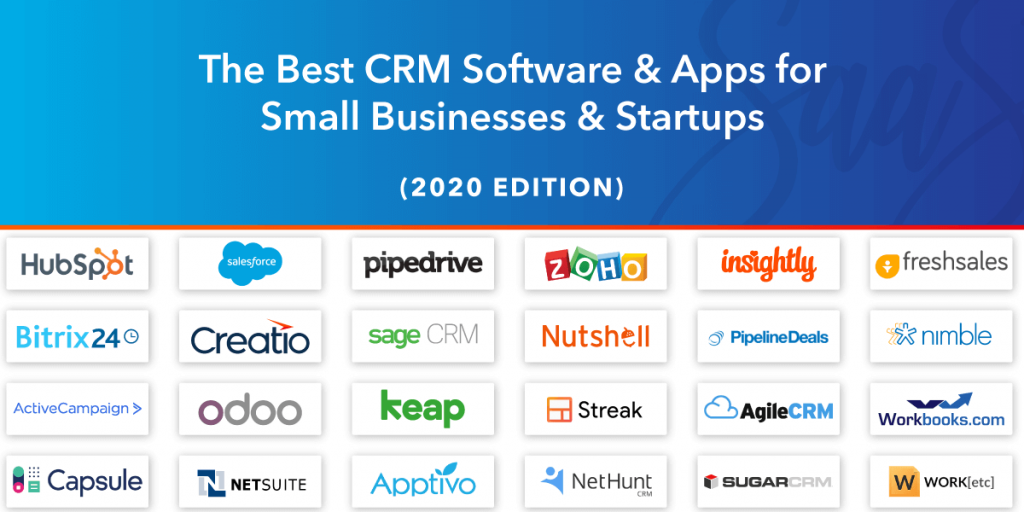
Unlocking the Power of CRM Integration with Airtable
In today’s dynamic business landscape, the ability to effectively manage customer relationships is paramount. Customer Relationship Management (CRM) systems have become indispensable tools for businesses of all sizes, enabling them to streamline processes, enhance communication, and ultimately, drive revenue growth. While traditional CRM platforms offer robust features, they can sometimes feel rigid and inflexible. This is where the power of integration comes into play, and specifically, the integration of a CRM with a versatile platform like Airtable. This article delves deep into the world of CRM integration with Airtable, exploring its benefits, practical applications, and how you can harness its potential to supercharge your business.
What is CRM and Why is it Important?
Before we dive into the specifics of Airtable integration, let’s establish a solid understanding of CRM. CRM, or Customer Relationship Management, is a strategy and a set of technologies that companies use to manage and analyze customer interactions and data throughout the customer lifecycle. The primary goal of CRM is to improve business relationships, assist in customer retention, and drive sales growth.
Here are some key reasons why CRM is crucial for businesses:
- Centralized Customer Data: CRM systems provide a centralized repository for all customer-related information, including contact details, purchase history, communication logs, and more.
- Improved Customer Service: By having a 360-degree view of each customer, businesses can provide more personalized and efficient customer service.
- Enhanced Sales Performance: CRM tools help sales teams manage leads, track opportunities, and close deals more effectively.
- Data-Driven Decision Making: CRM systems provide valuable insights into customer behavior, market trends, and sales performance, enabling businesses to make informed decisions.
- Increased Efficiency: Automating repetitive tasks and streamlining workflows frees up employees to focus on more strategic initiatives.
Introducing Airtable: The Versatile Platform
Airtable is a cloud-based collaborative platform that blends the best features of a spreadsheet, database, and project management tool. It’s known for its user-friendly interface, flexibility, and powerful features. Unlike traditional spreadsheets, Airtable allows you to structure data in a way that is much more organized and relational. You can create multiple views of your data, customize fields, and link records together, making it an ideal solution for managing a wide range of business processes, including CRM.
Key features of Airtable that make it suitable for CRM:
- User-Friendly Interface: Airtable’s intuitive interface makes it easy to learn and use, even for those with limited technical expertise.
- Customizable Fields: You can customize fields to store various types of data, including text, numbers, dates, attachments, and more.
- Relational Databases: Airtable allows you to link records across different tables, creating a relational database that reflects the interconnectedness of your data.
- Multiple Views: You can create different views of your data, such as grid, calendar, kanban, and gallery, to visualize your information in various ways.
- Automation: Airtable’s automation features allow you to automate repetitive tasks, such as sending email notifications or updating records.
- Integrations: Airtable integrates with a wide range of other applications, including CRM platforms, marketing tools, and communication platforms.
The Synergy: CRM Integration with Airtable
The integration of a CRM with Airtable offers a powerful combination that combines the strengths of both platforms. By connecting your CRM data with Airtable, you can create a more flexible, customizable, and accessible CRM solution. This integration allows you to:
- Consolidate Data: Bring data from your CRM and other sources into a single, centralized location in Airtable.
- Customize Workflows: Build custom workflows and processes tailored to your specific business needs.
- Enhance Data Visualization: Leverage Airtable’s various views and features to visualize your CRM data in new and insightful ways.
- Improve Collaboration: Share CRM data with your team and collaborate on projects in real-time.
- Automate Tasks: Automate tasks such as data entry, notifications, and report generation.
Benefits of CRM Integration with Airtable
The advantages of integrating your CRM with Airtable are numerous and can significantly impact your business’s performance. Here are some of the key benefits:
- Increased Flexibility: Airtable’s flexibility allows you to customize your CRM solution to fit your specific business requirements. You’re not constrained by the limitations of a rigid CRM platform.
- Improved Data Management: Centralize and organize your customer data in a more efficient and accessible way.
- Enhanced Reporting and Analysis: Leverage Airtable’s reporting and visualization features to gain deeper insights into your customer data.
- Streamlined Workflows: Automate repetitive tasks and streamline your workflows to improve efficiency and productivity.
- Cost-Effectiveness: Airtable is often more cost-effective than traditional CRM platforms, especially for small and medium-sized businesses.
- Enhanced Collaboration: Facilitate better collaboration among team members by sharing CRM data and workflows in a centralized platform.
- Greater Control: Have more control over your CRM data and how it’s managed.
- Scalability: Airtable can scale with your business, accommodating your growing data needs.
How to Integrate Your CRM with Airtable
There are several ways to integrate your CRM with Airtable, depending on your CRM platform and your technical expertise. Here are some common methods:
1. Using Native Integrations (if available)
Some CRM platforms have native integrations with Airtable. These integrations allow you to easily connect your CRM data with Airtable without any coding. Check your CRM platform’s documentation to see if a native integration is available. If so, the setup process is usually straightforward, involving connecting your accounts and mapping the data fields.
2. Using Third-Party Integration Tools
If your CRM doesn’t have a native integration with Airtable, you can use third-party integration tools like Zapier, Integromat (now Make), or Automate.io. These tools allow you to connect different applications and automate workflows. You’ll need to create “zaps” or “scenarios” that trigger actions in Airtable based on events in your CRM, or vice-versa. This method requires some configuration, but it’s generally user-friendly and doesn’t require coding.
3. Using the Airtable API
For more advanced users, you can use the Airtable API to create custom integrations. This method gives you the most control over the integration process, but it also requires coding knowledge. You can use the API to pull data from your CRM, push data to Airtable, and automate complex workflows. This approach is ideal if you have specific data transformation or workflow requirements that aren’t met by the other methods.
4. Manual Data Import/Export
If you’re on a tight budget or have limited technical skills, you can manually import and export data between your CRM and Airtable. This involves exporting data from your CRM (usually in CSV or Excel format) and importing it into Airtable. You can also export data from Airtable and import it into your CRM. This method is time-consuming and prone to errors, so it’s best for small datasets or infrequent data updates.
Step-by-Step Guide: Integrating with Zapier (Example)
Let’s walk through a basic example of how to integrate your CRM with Airtable using Zapier. This example assumes you’re using a popular CRM like HubSpot or Salesforce, but the general principles apply to other CRM platforms. Note that the specific steps will vary depending on your CRM and the specific data you want to integrate.
- Create a Zapier Account: If you don’t already have one, sign up for a Zapier account.
- Choose Your Trigger: In Zapier, you’ll start by selecting a “trigger.” The trigger is the event that will start your automation. For example, you might choose “New Contact” in your CRM as the trigger.
- Connect Your CRM Account: Connect your CRM account to Zapier by providing your login credentials.
- Test Your Trigger: Zapier will test your trigger to make sure it’s working correctly. This usually involves pulling sample data from your CRM.
- Choose Your Action: Next, you’ll choose an “action.” The action is what you want Zapier to do in Airtable. For example, you might choose “Create Record” in Airtable.
- Connect Your Airtable Account: Connect your Airtable account to Zapier by providing your API key and base ID.
- Map Data Fields: Map the data fields from your CRM to the corresponding fields in your Airtable base. For example, you might map the “First Name” field from your CRM to the “First Name” field in your Airtable table.
- Test Your Action: Test your action to make sure it’s working correctly. Zapier will create a test record in your Airtable base.
- Turn on Your Zap: Once you’ve tested your zap and everything is working as expected, turn it on. Your automation will now be active, and new contacts from your CRM will automatically be added to your Airtable base.
Real-World Applications of CRM Integration with Airtable
The possibilities of CRM integration with Airtable are vast. Here are some real-world examples of how businesses are using this powerful combination:
- Lead Management: Import leads from your CRM into Airtable, track their progress through the sales pipeline, and manage follow-up activities.
- Sales Pipeline Management: Visualize your sales pipeline in a Kanban view in Airtable, track deals, and manage sales activities.
- Customer Onboarding: Automate the onboarding process for new customers by importing customer data from your CRM and creating tasks in Airtable.
- Project Management: Link customer data from your CRM to project records in Airtable to keep track of project progress and client information in one place.
- Customer Support: Integrate customer support tickets from your CRM into Airtable to track customer issues and resolutions.
- Marketing Campaign Tracking: Import customer data from your CRM and track marketing campaign performance in Airtable.
- Event Management: Manage event registrations and attendee data from your CRM in Airtable.
- Reporting and Analytics: Create custom reports and dashboards in Airtable to analyze your CRM data and gain insights into your business performance.
Tips for Successful CRM Integration with Airtable
To ensure a smooth and successful CRM integration with Airtable, keep these tips in mind:
- Plan Your Integration: Before you start, carefully plan your integration. Determine which data you want to integrate, how you want to structure the data in Airtable, and the workflows you want to automate.
- Choose the Right Integration Method: Select the integration method that best suits your needs and technical expertise.
- Test Thoroughly: Test your integration thoroughly before deploying it to a production environment. Make sure the data is flowing correctly and that your workflows are working as expected.
- Map Data Fields Carefully: Pay close attention to how you map data fields between your CRM and Airtable. Ensure that the data is being mapped to the correct fields and that the data types are compatible.
- Monitor Your Integration: After you’ve deployed your integration, monitor it regularly to ensure that it’s working correctly. Check for any errors or data inconsistencies.
- Keep Your Systems Updated: Regularly update your CRM, Airtable, and any integration tools you’re using to ensure compatibility and security.
- Document Your Integration: Document your integration process, including the steps you took, the data fields you mapped, and any custom workflows you created. This will help you troubleshoot any issues and make it easier to maintain your integration over time.
- Start Small and Iterate: Don’t try to integrate everything at once. Start with a small subset of your data and workflows, and then gradually expand your integration as you gain experience.
- Leverage Airtable’s Features: Take advantage of Airtable’s features, such as formulas, automations, and views, to enhance your CRM data and workflows.
Choosing the Right CRM for Airtable Integration
While Airtable can integrate with a variety of CRMs, the ease and effectiveness of the integration can vary. Here are some popular CRM platforms that often integrate well with Airtable:
- HubSpot: HubSpot is a popular CRM platform that offers a free version and a wide range of features. It integrates well with Airtable through Zapier and other third-party tools.
- Salesforce: Salesforce is a leading CRM platform for larger businesses. It integrates with Airtable through Zapier and the Airtable API.
- Zoho CRM: Zoho CRM is a comprehensive CRM platform that offers a variety of features and integrations. It integrates with Airtable through Zapier and other third-party tools.
- Pipedrive: Pipedrive is a sales-focused CRM platform that is popular among small and medium-sized businesses. It integrates with Airtable through Zapier and other third-party tools.
- Monday.com: While not strictly a CRM, Monday.com’s flexibility makes it a good choice for some businesses. It integrates with Airtable via Zapier.
The best CRM for you will depend on your specific business needs and budget. Consider factors such as features, pricing, ease of use, and integration capabilities when making your decision.
Troubleshooting Common Integration Issues
Even with careful planning and execution, you may encounter some issues during your CRM integration with Airtable. Here are some common problems and how to troubleshoot them:
- Data Mapping Errors: Ensure that the data fields in your CRM are correctly mapped to the corresponding fields in Airtable. Double-check the data types and formats to ensure they are compatible.
- Data Synchronization Issues: If data is not synchronizing correctly between your CRM and Airtable, check your integration settings and ensure that the trigger and action are configured correctly. You may also need to troubleshoot your connection with the integration tool (e.g., Zapier).
- Error Messages: Pay attention to error messages generated by your integration tool. These messages often provide clues about the cause of the problem.
- Rate Limits: Some CRM platforms and integration tools have rate limits, which can restrict the number of API calls you can make within a certain time period. If you’re exceeding these limits, you may need to adjust your workflow to reduce the number of API calls.
- Data Formatting Issues: Ensure that the data being transferred between your CRM and Airtable is properly formatted. For example, dates should be formatted consistently, and text fields should not contain any special characters that could cause problems.
- Connection Errors: If you’re having trouble connecting your CRM or Airtable account to your integration tool, double-check your login credentials and API keys. Make sure you have the necessary permissions to access the data.
- Workflow Errors: If your workflows are not working as expected, review your workflow logic and ensure that the triggers, actions, and conditions are configured correctly.
- API Changes: CRM platforms and Airtable may occasionally update their APIs. These updates can sometimes break your integration. Keep an eye on updates from the platforms you are using and update your integration accordingly.
The Future of CRM and Airtable Integration
As technology continues to evolve, we can expect even more sophisticated and seamless CRM integration with Airtable. Here are some potential future trends:
- More Native Integrations: We can expect to see more CRM platforms develop native integrations with Airtable, making the integration process even easier.
- Advanced Automation: Automation capabilities will become more advanced, allowing businesses to automate more complex workflows and processes.
- AI-Powered Insights: Artificial intelligence (AI) will play an increasing role in CRM integration, providing businesses with deeper insights into their customer data and helping them make more informed decisions.
- Enhanced Data Visualization: Data visualization tools will become more sophisticated, allowing businesses to visualize their CRM data in new and innovative ways.
- Improved User Experience: The user experience of CRM integration will become more intuitive and user-friendly.
Conclusion: Embrace the Power of Integration
CRM integration with Airtable is a powerful combination that can transform the way you manage your customer relationships and drive business growth. By consolidating data, customizing workflows, enhancing data visualization, and automating tasks, you can create a more efficient, effective, and customer-centric business. Whether you’re a small business or a large enterprise, the benefits of integrating your CRM with Airtable are undeniable. Embrace the power of integration and unlock the full potential of your customer data. Start exploring the possibilities today and see how this powerful combination can supercharge your business.


